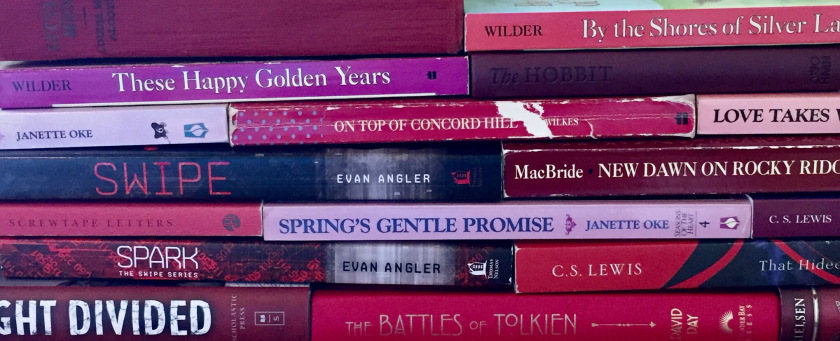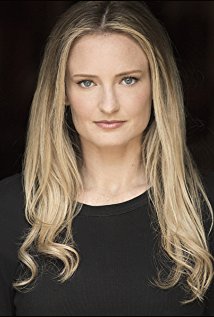 In which four detectives (professional and amateur) including Hercule Poirot play bridge in one room of Mr Shaitana’s house whilst four other guests play bridge in another, where Mr Shaitana sits by the fire and watches; and when they get up to go home at the end of the evening, one of the four has murdered their host. No one else is implicated in the crime; if you make a guess at whodunit, you have a 25% chance of being correct! Poirot, of course, identifies the murderer through psychological examination of the characters involved – as well as checking through their dubious pasts to see if they have any murderous skeletons in their cupboard. And of course, if you haven’t read the book yet, don’t worry, I promise not to tell you whodunit!
In which four detectives (professional and amateur) including Hercule Poirot play bridge in one room of Mr Shaitana’s house whilst four other guests play bridge in another, where Mr Shaitana sits by the fire and watches; and when they get up to go home at the end of the evening, one of the four has murdered their host. No one else is implicated in the crime; if you make a guess at whodunit, you have a 25% chance of being correct! Poirot, of course, identifies the murderer through psychological examination of the characters involved – as well as checking through their dubious pasts to see if they have any murderous skeletons in their cupboard. And of course, if you haven’t read the book yet, don’t worry, I promise not to tell you whodunit!
 This book has no dedication; instead Christie has written a foreword assuring the reader that the murderer is indeed one of the four people present in the room and that there’s no need to go hunting for the “least likely person”. The book was originally published in the US in magazine format in the Saturday Evening Post during May and June 1936; in the UK, it appeared in book format in November 1936, and in the US early in 1937.
This book has no dedication; instead Christie has written a foreword assuring the reader that the murderer is indeed one of the four people present in the room and that there’s no need to go hunting for the “least likely person”. The book was originally published in the US in magazine format in the Saturday Evening Post during May and June 1936; in the UK, it appeared in book format in November 1936, and in the US early in 1937.
 After a slight drop in quality with Murder in Mesopotamia, this book heralds a real return to form with Christie creating a truly intriguing crime and suspenseful investigations by Poirot and his friends. There’s no separate narrator, apart from Christie herself, and every so often she adds a little aside, giving it a personal touch, as though she’s become our friend and she’s confiding in us. Whilst Superintendent Battle is conducting his first interview with Dr Roberts, for example, she just gives us that little extra insight that wouldn’t be there in a straightforward third-person narration: “”..we’ve interviewed Mr. Shaitana’s solicitor. We know the terms of his will. Nothing of interest there. He had relatives in Syria, it seems. And then, of course, we’ve been through all his private papers.” Was it fancy or did that broad, clean-shaven countenance look a little strained – a little wooden? “And?” said Dr Roberts. “Nothing,” said Superintendent Battle, watching him. There wasn’t a sigh of relief. Nothing so blatant as that. But the doctor’s figure seemed to relax just a shade more comfortably in his chair.”
After a slight drop in quality with Murder in Mesopotamia, this book heralds a real return to form with Christie creating a truly intriguing crime and suspenseful investigations by Poirot and his friends. There’s no separate narrator, apart from Christie herself, and every so often she adds a little aside, giving it a personal touch, as though she’s become our friend and she’s confiding in us. Whilst Superintendent Battle is conducting his first interview with Dr Roberts, for example, she just gives us that little extra insight that wouldn’t be there in a straightforward third-person narration: “”..we’ve interviewed Mr. Shaitana’s solicitor. We know the terms of his will. Nothing of interest there. He had relatives in Syria, it seems. And then, of course, we’ve been through all his private papers.” Was it fancy or did that broad, clean-shaven countenance look a little strained – a little wooden? “And?” said Dr Roberts. “Nothing,” said Superintendent Battle, watching him. There wasn’t a sigh of relief. Nothing so blatant as that. But the doctor’s figure seemed to relax just a shade more comfortably in his chair.”
 Christie doesn’t restrict her suspicions just to Dr Roberts. When Rhoda tells Anne Meredith that she has been to see Mrs Oliver: “”You’d gone off on your own ploys with the boy friend. I thought at least he’d give you tea.” Anne was silent for a minute – a voice ringing in her ears. “Can’t we pick up your friend somewhere and all have tea together?” And her own answer – hurried, without taking time to think: “Thanks awfully, but we’ve got to go out to tea together with some people.” A lie – and such a silly lie. The stupid way one said the first thing that came into one’s head instead of just taking a minute or two to think.” At the end of Miss Meredith’s first interview with Battle, Rhoda turns on the wireless to hear the announcer say: “You have just heard the Black Nubians play “Why do you tell me lies, Baby?”” That’s a smart way of implying that Miss Meredith isn’t telling the truth.
Christie doesn’t restrict her suspicions just to Dr Roberts. When Rhoda tells Anne Meredith that she has been to see Mrs Oliver: “”You’d gone off on your own ploys with the boy friend. I thought at least he’d give you tea.” Anne was silent for a minute – a voice ringing in her ears. “Can’t we pick up your friend somewhere and all have tea together?” And her own answer – hurried, without taking time to think: “Thanks awfully, but we’ve got to go out to tea together with some people.” A lie – and such a silly lie. The stupid way one said the first thing that came into one’s head instead of just taking a minute or two to think.” At the end of Miss Meredith’s first interview with Battle, Rhoda turns on the wireless to hear the announcer say: “You have just heard the Black Nubians play “Why do you tell me lies, Baby?”” That’s a smart way of implying that Miss Meredith isn’t telling the truth.
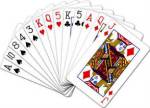 Poirot builds much of his initial questioning around the bridge game, using the scoresheets that he collected from the scene of the crime. Just as Amy Leatheran had appended the plan of the dig house in Murder in Mesopotamia, and as Hastings was often wont to attach pertinent documents to his narrations, Christie gives us a facsimile of the bridge rubbers. This way we have precisely the same evidence that she/Poirot has – very similar to providing the full list of items in the luggage in Death in the Clouds – the reader and Poirot have precisely the same information. Poirot’s very attached to the bridge rubbers: “They are illuminating, do you not think? What do we want in this case? A clue to character. And a clue not to one character, but to four characters. And this is where we are most likely to find it – in these scribbled figures.”
Poirot builds much of his initial questioning around the bridge game, using the scoresheets that he collected from the scene of the crime. Just as Amy Leatheran had appended the plan of the dig house in Murder in Mesopotamia, and as Hastings was often wont to attach pertinent documents to his narrations, Christie gives us a facsimile of the bridge rubbers. This way we have precisely the same evidence that she/Poirot has – very similar to providing the full list of items in the luggage in Death in the Clouds – the reader and Poirot have precisely the same information. Poirot’s very attached to the bridge rubbers: “They are illuminating, do you not think? What do we want in this case? A clue to character. And a clue not to one character, but to four characters. And this is where we are most likely to find it – in these scribbled figures.”
 Poirot is highly analytical in this book, concentrating on the psychology of the four suspects: “we know the kind of murder that has been committed, the way it was committed. If we have a person who from the psychological point of view could not have committed that particular type of murder, then we can dismiss that person from our calculations.” He holds firmly to this belief right through the book, even when he is driven to agonies of self-doubt just before his final denouement. One of the suspects confesses that they have committed the crime; but it goes against everything that Poirot believed for certain. “”The question is,” he said, can Hercule Poirot possibly be wrong?” “No one can always be right,” said XXX coldly. “I am,” said Poirot. “Always I am right. It is so invariable that it startles me. But now it looks, it very much looks, as though I am wrong. And that upsets me […] Decidedly, I am mad. No – sacré nom d’un petit bonhomme – I am not mad! I am right. I must be right. I am willing to believe that you killed Mr Shaitana – but you cannot have killed him in the way you said you did. No one can do a thing that is not dans son caractère!!”” And of course, he’s right.
Poirot is highly analytical in this book, concentrating on the psychology of the four suspects: “we know the kind of murder that has been committed, the way it was committed. If we have a person who from the psychological point of view could not have committed that particular type of murder, then we can dismiss that person from our calculations.” He holds firmly to this belief right through the book, even when he is driven to agonies of self-doubt just before his final denouement. One of the suspects confesses that they have committed the crime; but it goes against everything that Poirot believed for certain. “”The question is,” he said, can Hercule Poirot possibly be wrong?” “No one can always be right,” said XXX coldly. “I am,” said Poirot. “Always I am right. It is so invariable that it startles me. But now it looks, it very much looks, as though I am wrong. And that upsets me […] Decidedly, I am mad. No – sacré nom d’un petit bonhomme – I am not mad! I am right. I must be right. I am willing to believe that you killed Mr Shaitana – but you cannot have killed him in the way you said you did. No one can do a thing that is not dans son caractère!!”” And of course, he’s right.
 Among other insights into Poirot’s brain, he describes himself as “bourgeois”, as Christie does of him in Three Act Tragedy. Shaitana appreciates and values the artistry of a decently planned, immaculately executed murder, and is very surprised that Poirot doesn’t share this view. While Poirot admits that a murderer can be an artist, “he is still a murderer! […] I can admire the perfect murderer – I can also admire a tiger – that splendid tawny-striped beast. But I will admire him from outside his cage. I will not go inside. That is to say, not unless it is my duty to do so.” Shaitana beckons the tiger into his dinner party, and doesn’t survive the experience.
Among other insights into Poirot’s brain, he describes himself as “bourgeois”, as Christie does of him in Three Act Tragedy. Shaitana appreciates and values the artistry of a decently planned, immaculately executed murder, and is very surprised that Poirot doesn’t share this view. While Poirot admits that a murderer can be an artist, “he is still a murderer! […] I can admire the perfect murderer – I can also admire a tiger – that splendid tawny-striped beast. But I will admire him from outside his cage. I will not go inside. That is to say, not unless it is my duty to do so.” Shaitana beckons the tiger into his dinner party, and doesn’t survive the experience.
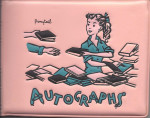 Poirot also finds the thought of the “celebrity” nature of the guests at Shaitana’s party rather exciting. Miss Meredith is intimidated by them, but Poirot has no truck with that idea: “Mademoiselle, you should not be intimidated – you should be thrilled! You should have all ready your autograph book and your fountain pen […] what would I not give at this minute to be even the most minor of film stars!” That may seem surprising – but remember back to those early cases in Poirot Investigates – he and Hastings were always leafing through the gossip magazines to source salacious titbits about celebs.
Poirot also finds the thought of the “celebrity” nature of the guests at Shaitana’s party rather exciting. Miss Meredith is intimidated by them, but Poirot has no truck with that idea: “Mademoiselle, you should not be intimidated – you should be thrilled! You should have all ready your autograph book and your fountain pen […] what would I not give at this minute to be even the most minor of film stars!” That may seem surprising – but remember back to those early cases in Poirot Investigates – he and Hastings were always leafing through the gossip magazines to source salacious titbits about celebs.
 Poirot isn’t, however, the most well-drawn character in this book, nor are any of the four suspects. Christie devotes most attention to Mrs Oliver, whom we first saw as one of Parker Pyne’s backroom boys in Parker Pyne Investigates. Now she is given much greater prominence. She’s depicted as distinctly batty, obsessed with apples, eccentric of costume, and unkempt of appearance. On one hand she’s devoted to her Finnish detective, and on the other hand she despises him. As a successful writer (currently on her 32nd, whereas this was Christie’s 20th), she knows what her readership likes, even if she doesn’t always agree with them; as a result, she doesn’t care if she’s inaccurate with her legal procedures, but she is upset to discover that French beans are over by Michaelmas (it ruined a plot detail). She’s meddling, instinctive, and constantly self-contradictory. Christie invests Mrs Oliver with so much description and so many characteristics and eccentricities; it’s clear that she has the confidence to do this because she is based on herself. She can’t wait to be let loose on the criminal investigation world in real life, but she’s determined to enjoy it as though it were detective fiction. This might be a realistic description of the enthused amateur, but it was never really going to endear her to Superintendent Battle. They say if you don’t know what to write about, write about something you know; Christie clearly writes about someone she knows very well – herself.
Poirot isn’t, however, the most well-drawn character in this book, nor are any of the four suspects. Christie devotes most attention to Mrs Oliver, whom we first saw as one of Parker Pyne’s backroom boys in Parker Pyne Investigates. Now she is given much greater prominence. She’s depicted as distinctly batty, obsessed with apples, eccentric of costume, and unkempt of appearance. On one hand she’s devoted to her Finnish detective, and on the other hand she despises him. As a successful writer (currently on her 32nd, whereas this was Christie’s 20th), she knows what her readership likes, even if she doesn’t always agree with them; as a result, she doesn’t care if she’s inaccurate with her legal procedures, but she is upset to discover that French beans are over by Michaelmas (it ruined a plot detail). She’s meddling, instinctive, and constantly self-contradictory. Christie invests Mrs Oliver with so much description and so many characteristics and eccentricities; it’s clear that she has the confidence to do this because she is based on herself. She can’t wait to be let loose on the criminal investigation world in real life, but she’s determined to enjoy it as though it were detective fiction. This might be a realistic description of the enthused amateur, but it was never really going to endear her to Superintendent Battle. They say if you don’t know what to write about, write about something you know; Christie clearly writes about someone she knows very well – herself.
 Mrs Oliver always favours women over men, whether it be in positions of power or in social engagement. She’s convinced a woman will always be the better person for the job, whatever it is. Almost to prove it, there’s an unexpected amount of very sexist talk in this book – but not anti-men, perhaps surprisingly. Battle confides in Miss Burgess “I don’t want to say anything against your sex but there’s no doubt that a woman, when she’s rattled, is apt to lash out with her tongue a bit”. Working out who should make enquiries about whom, he notes of Mrs Oliver, “she’s a sport. And women get to know things about other women that men can’t get at.” When Mrs Luxmore is recollecting her time spent with Major Despard, she says he ““never said anything. He was the soul of honour.” “But a woman always knows,” prompted Poirot. “How right you are… Yes, a woman knows…”” What tosh!
Mrs Oliver always favours women over men, whether it be in positions of power or in social engagement. She’s convinced a woman will always be the better person for the job, whatever it is. Almost to prove it, there’s an unexpected amount of very sexist talk in this book – but not anti-men, perhaps surprisingly. Battle confides in Miss Burgess “I don’t want to say anything against your sex but there’s no doubt that a woman, when she’s rattled, is apt to lash out with her tongue a bit”. Working out who should make enquiries about whom, he notes of Mrs Oliver, “she’s a sport. And women get to know things about other women that men can’t get at.” When Mrs Luxmore is recollecting her time spent with Major Despard, she says he ““never said anything. He was the soul of honour.” “But a woman always knows,” prompted Poirot. “How right you are… Yes, a woman knows…”” What tosh!
 As usual, there are a few references to check out. First: locations. The book opens with Poirot meeting Shaitana at an Exhibition of Snuff-Boxes at Wessex House. It’s a convincing name for an exhibition hall, but in reality it’s a medical institution in Somerset. Mrs Lorrimer advises that she first met Shaitana at the Winter Palace in Luxor. Not a tourist site, as such, but a grand hotel, still very much in existence and currently run as a Sofitel. According to their website, Christie was to write Death on the Nile whilst staying there.
As usual, there are a few references to check out. First: locations. The book opens with Poirot meeting Shaitana at an Exhibition of Snuff-Boxes at Wessex House. It’s a convincing name for an exhibition hall, but in reality it’s a medical institution in Somerset. Mrs Lorrimer advises that she first met Shaitana at the Winter Palace in Luxor. Not a tourist site, as such, but a grand hotel, still very much in existence and currently run as a Sofitel. According to their website, Christie was to write Death on the Nile whilst staying there.
 We’re given the suspects’ addresses. Dr Roberts lives at 200 Gloucester Terrace, London W2 – which exists, a suitably solid London address; Mrs Lorrimer’s address is 111 Cheyne Lane, Chelsea – this doesn’t exist but of course there is Cheyne Walk; Miss Meredith’s home is Wendon Cottage, Wallingford – Wallingford of course exists, in Oxfordshire, but there’s no Wendon Cottage as far as I can see. Her London club is the Ladies’ Naval and Military, whose address is in St James’s Square. We never learn Despard’s address, curiously. Other locations of possible interest include a branch of the London and Wessex Bank in Lancaster Gate (it never existed as a bank); the late Mrs Craddock lived at 117 North Audley Street (North Audley Street exists, but there isn’t a No 117); Combeacre, in Devon, where Mrs Benson lived, also doesn’t exist; but Miss Meredith’s birth town of Quetta most certainly exists – at the time it was in India, now it is in Pakistan, the largest city of the province of Baluchistan.
We’re given the suspects’ addresses. Dr Roberts lives at 200 Gloucester Terrace, London W2 – which exists, a suitably solid London address; Mrs Lorrimer’s address is 111 Cheyne Lane, Chelsea – this doesn’t exist but of course there is Cheyne Walk; Miss Meredith’s home is Wendon Cottage, Wallingford – Wallingford of course exists, in Oxfordshire, but there’s no Wendon Cottage as far as I can see. Her London club is the Ladies’ Naval and Military, whose address is in St James’s Square. We never learn Despard’s address, curiously. Other locations of possible interest include a branch of the London and Wessex Bank in Lancaster Gate (it never existed as a bank); the late Mrs Craddock lived at 117 North Audley Street (North Audley Street exists, but there isn’t a No 117); Combeacre, in Devon, where Mrs Benson lived, also doesn’t exist; but Miss Meredith’s birth town of Quetta most certainly exists – at the time it was in India, now it is in Pakistan, the largest city of the province of Baluchistan.
 Some other references that occurred to me whilst I was reading: Dr Roberts is described as having a tendency to embonpoint, which was a new one on me. It means heavy, but not unattractive, girth. Two of Christie’s other books receive a nod; Poirot proudly displays the murder weapon from Murder on the Orient Express, and rather carelessly tells the reader whodunit; I guess Christie thought she’d already sold enough copies. Amusingly, Mrs Oliver is recognised by Miss Meredith as the writer of The Body in the Library, which Christie must have thought was such a great title that she herself wrote a book with the same title six years later.
Some other references that occurred to me whilst I was reading: Dr Roberts is described as having a tendency to embonpoint, which was a new one on me. It means heavy, but not unattractive, girth. Two of Christie’s other books receive a nod; Poirot proudly displays the murder weapon from Murder on the Orient Express, and rather carelessly tells the reader whodunit; I guess Christie thought she’d already sold enough copies. Amusingly, Mrs Oliver is recognised by Miss Meredith as the writer of The Body in the Library, which Christie must have thought was such a great title that she herself wrote a book with the same title six years later.
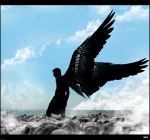 After an awkward moment of silence, Mrs Oliver remarks, “is it twenty-to or twenty-past? An angel passing… My feet aren’t crossed – it must be a black angel!” I’d absolutely no idea what she was going on about here, it sounds like a series of intertwined superstitions that have passed me by. Apparently there’s a whole folklore out there that conversations die out at twenty past the hour. It’s also meant to represent an angel passing; and as Mrs Oliver’s feet aren’t crossed (like you cross fingers for good luck), the implication is that it’s a bad luck sign. Who knew?
After an awkward moment of silence, Mrs Oliver remarks, “is it twenty-to or twenty-past? An angel passing… My feet aren’t crossed – it must be a black angel!” I’d absolutely no idea what she was going on about here, it sounds like a series of intertwined superstitions that have passed me by. Apparently there’s a whole folklore out there that conversations die out at twenty past the hour. It’s also meant to represent an angel passing; and as Mrs Oliver’s feet aren’t crossed (like you cross fingers for good luck), the implication is that it’s a bad luck sign. Who knew?
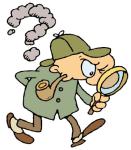 Dr Roberts describes himself as a “St. Christopher’s man” – presumably the same medical institution where Amy Leatheran trained in Murder in Mesopotamia. Also in conversation with the good doctor, Poirot recollects Sherlock Holmes: “the curious incident of the dog in the night. The dog did not howl in the night. That is the curious thing”. Christie couldn’t have known about Mark Haddon’s book or Simon Stephens’ play. I had no idea this title referred to the Sherlock Holmes story Silver Blaze. You live and learn.
Dr Roberts describes himself as a “St. Christopher’s man” – presumably the same medical institution where Amy Leatheran trained in Murder in Mesopotamia. Also in conversation with the good doctor, Poirot recollects Sherlock Holmes: “the curious incident of the dog in the night. The dog did not howl in the night. That is the curious thing”. Christie couldn’t have known about Mark Haddon’s book or Simon Stephens’ play. I had no idea this title referred to the Sherlock Holmes story Silver Blaze. You live and learn.
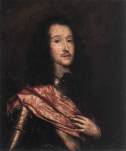 Those Black Nubians who were on the wireless in Anne and Rhoda’s house, weren’t a real group. Rowland Ward’s – from where Despard thinks Shaitana would have sourced his eland head – was a major taxidermist, and founder of Rowland Ward Ltd; the company is still going and publishes the authoritative Records of Big Game series of books. And the poem that Poirot misquotes to Mrs Luxmore, “I could not love thee, dear, so much, loved I not honour more” is a quote from Richard Lovelace’s To Lucasta, Going to the Wars.
Those Black Nubians who were on the wireless in Anne and Rhoda’s house, weren’t a real group. Rowland Ward’s – from where Despard thinks Shaitana would have sourced his eland head – was a major taxidermist, and founder of Rowland Ward Ltd; the company is still going and publishes the authoritative Records of Big Game series of books. And the poem that Poirot misquotes to Mrs Luxmore, “I could not love thee, dear, so much, loved I not honour more” is a quote from Richard Lovelace’s To Lucasta, Going to the Wars.
 Regular readers will know I like to research the present-day value of any significant sums of money mentioned in Christie’s books, just to get a more realistic feel for the amounts in question. There aren’t many in this book, and those there are, are quite low value. But I thought it would be interesting to see how much the entrance fee to that Snuffbox exhibition would be today; it cost Poirot one guinea in 1936, which today would be worth almost £52. I can’t see anyone paying that!! And the nineteen pairs of top quality stockings that Poirot buys; they’re 37/6 each (£1.82 if you’re too young to convert). Approximately £35.65 worth of stockings in 1936. That’s an astronomical £1,760 in today’s value. 90 quid for a pair of stockings!
Regular readers will know I like to research the present-day value of any significant sums of money mentioned in Christie’s books, just to get a more realistic feel for the amounts in question. There aren’t many in this book, and those there are, are quite low value. But I thought it would be interesting to see how much the entrance fee to that Snuffbox exhibition would be today; it cost Poirot one guinea in 1936, which today would be worth almost £52. I can’t see anyone paying that!! And the nineteen pairs of top quality stockings that Poirot buys; they’re 37/6 each (£1.82 if you’re too young to convert). Approximately £35.65 worth of stockings in 1936. That’s an astronomical £1,760 in today’s value. 90 quid for a pair of stockings!
Now it’s time for my usual at-a-glance summary, for Cards on the Table:
Publication Details: 1936. Fontana paperback, 4th impression, published in 1962, price 2/6. A bland, but informative cover illustration.
How many pages until the first death: 16. That’s not long to get acquainted with Mr. Shaitana, but then no one knew in advance there was going to be a murder at his party, not even the murderer.
Funny lines out of context: A few – and they’re not particularly funny really. Still, I’ll include them for completeness:
Of Mr Shaitana: “he gave wonderful parties – large parties, small parties, macabre parties, respectable parties and definitely “queer” parties.”
“A slightly stronger light shone over the bridge table, from whence the monotonous ejaculations continued.”
“He knows men, Colonel Race does.”
Memorable characters: As indicated earlier, the most memorable character in this book is Mrs Oliver. I’m not sure any of the four main suspects are that memorable; Shaitana, with his Mephistophelean tendencies, is probably the next most memorable.
Christie the Poison expert:
Christie slightly takes the mickey out of herself by having Mrs Oliver discuss untraceable poisons at Shaitana’s party with Major Despard and Dr Roberts. “Mrs Oliver was asking Major Despard if he knew of any unheard-of out-of-the-way poisons. “Well, there’s curare.” “My dear man, vieux jeu! That’s been done hundreds of times. I mean something new!””
Mr Craddock died of anthrax, from an infected shaving brush. This an extremely unlikely way to die in the present day, in western Europe, but remains comparatively common in Africa, with approximately 2,000 cases per year worldwide. There is a further death in the story – whose, I won’t say because it will ruin it for you if you know without having read the book – brought about by an injection of Evipan. This was a very early reference to this substance, as it didn’t come into regular use until the 1940s and 50s as a barbiturate anaesthetic. Rather gruesomely, it was also used as a murder weapon at Ravensbruck Concentration Camp for women during the Nazi regime.
Class/social issues of the time:
It’s beginning to appear that Christie spends less and less time talking about the social issues of the day as her books become more and more involved with elaborate plot dexterity and casting suspicion on the innocent. There are, however, a few racial moments: Shaitana was not only called a dago, but also “the sort of Dago who needed kicking badly. He used to make the toe of my boot fairly itch”, said the intemperate and clearly racist Despard. Later on he boasts to Poirot, “I never forget a face – even a black one”. Whether it’s a military tendency or just a coincidence, but Colonel Race has a similar approach, expressed in an alternative way. He doesn’t suspect Despard and implores Battle to agree with him. “He’s a white man, Battle […] Despard’s a white man, and I don’t believe he’s ever been a murderer. That’s my opinion. And I know something of men.” Even Rhoda tries to build up Anne’s confidence by confirming that she agreed that she knew Anne couldn’t possibly murder anyone, “but horrible suspicious foreigners don’t know that.” That’s not a nice way to talk about Poirot.
The only other social issue that gets a couple of mentions in this book is, perhaps surprisingly, foxhunting. Miss Meredith is talking to Poirot when she says of Shaitana, “you never know what would strike him as amusing. It might – it might be something cruel.” “Such as fox-hunting, eh?” replies Poirot. Christie says that Miss Meredith threw him a reproachful glance, so probably not that. In later conversation with Battle and Mrs Oliver, Poirot admits: “I have always disapproved of murder.” “What a delightfully droll way of putting it,” said Mrs Oliver. “Rather as though it were foxhunting or killing ospreys for hats.”
Classic denouement: Yes, although for reasons that will become clear as you read the book, not all the four suspects are in attendance for the denouement. The whole atmosphere of the book has been a gradual building up of tension throughout the investigation and the questioning, and the denouement follows on as a natural development of that. The guilty party does a great bravado job of assuming innocence until the last possible moment, which is always a delicious way of Christie to build them up only for Poirot to whack them down at the conclusion.
Happy ending? Not especially. There’s an indication of possible happiness ahead for two people but it’s probably a long way off. Justice is a tough bedfellow in this book.
Did the story ring true? Intriguingly, yes. Once you accept that a murder could take place under the circumstances in this book, everything else follows on naturally.
Overall satisfaction rating: I think this is an excellent read and have no hesitation awarding it a 10/10!
 Thanks for reading my blog of Cards on the Table and if you’ve read it too, I’d love to know what you think. Please just add a comment in the space below. Next up in the Agatha Christie Challenge will be Murder in The Mews. This is a book of four short stories – comparatively long ones, almost novellas in their own right – and I have a distinct memory that it’s a really rather good selection! In the meantime, please read it too then we can compare notes! Happy sleuthing!
Thanks for reading my blog of Cards on the Table and if you’ve read it too, I’d love to know what you think. Please just add a comment in the space below. Next up in the Agatha Christie Challenge will be Murder in The Mews. This is a book of four short stories – comparatively long ones, almost novellas in their own right – and I have a distinct memory that it’s a really rather good selection! In the meantime, please read it too then we can compare notes! Happy sleuthing!
